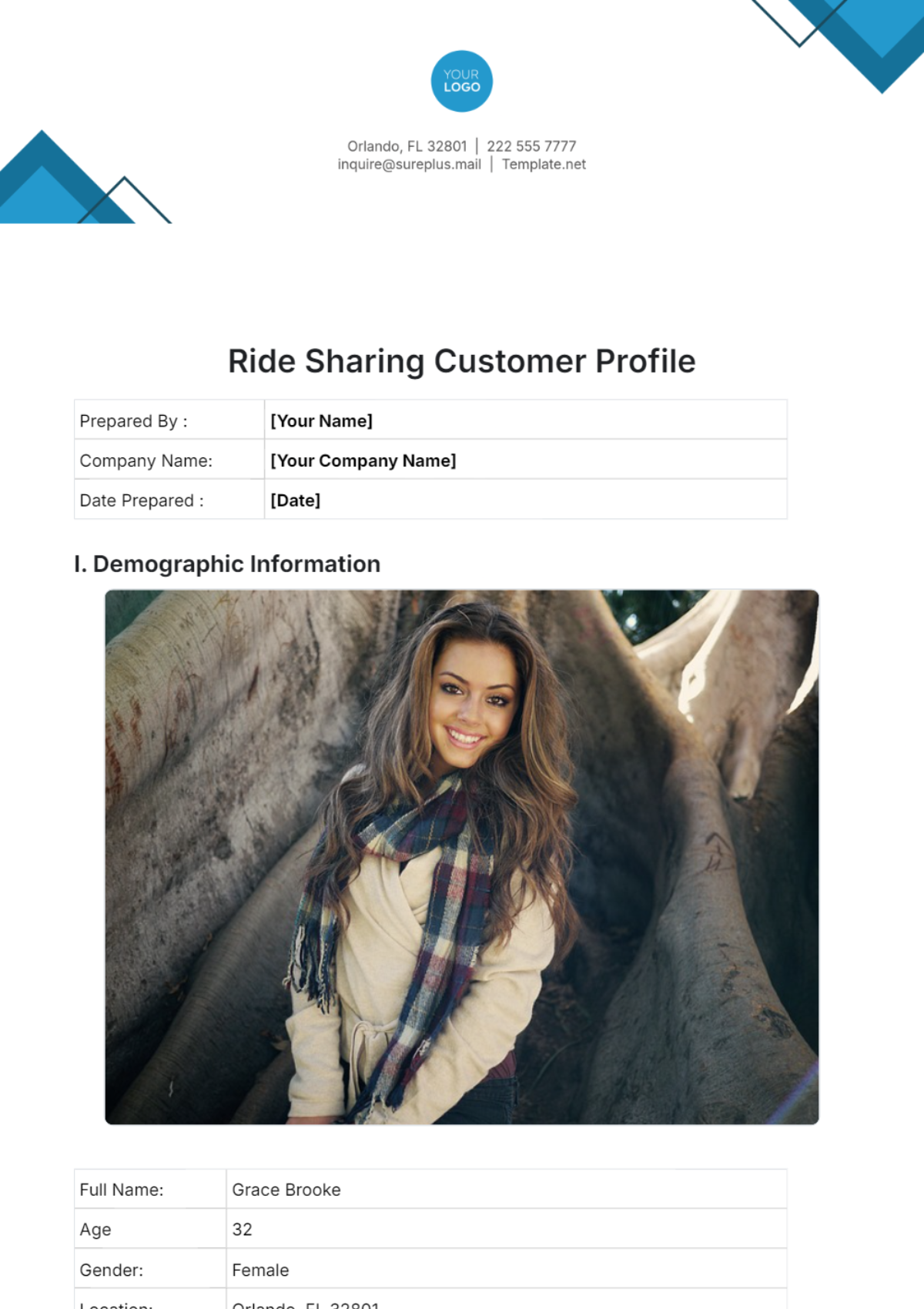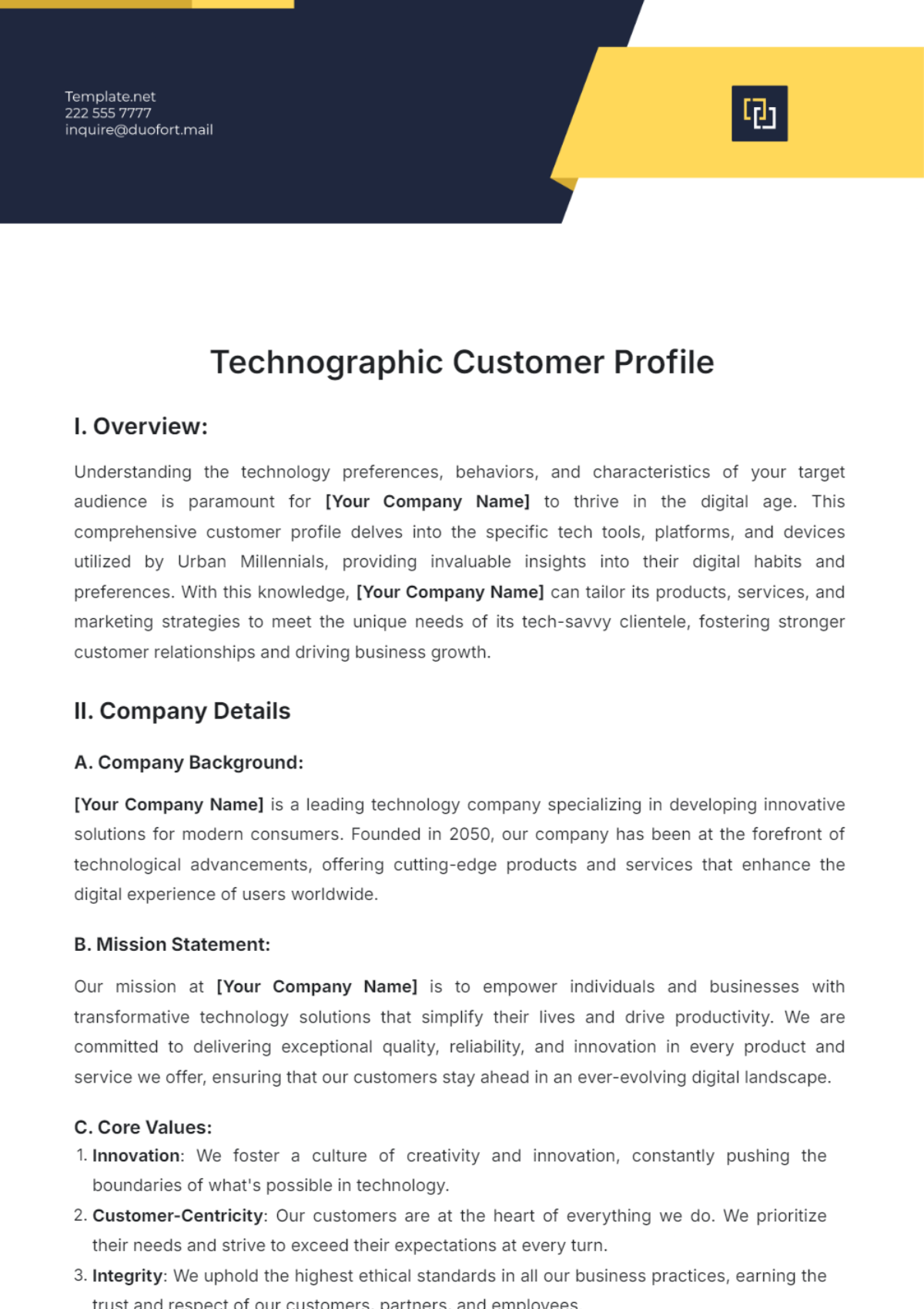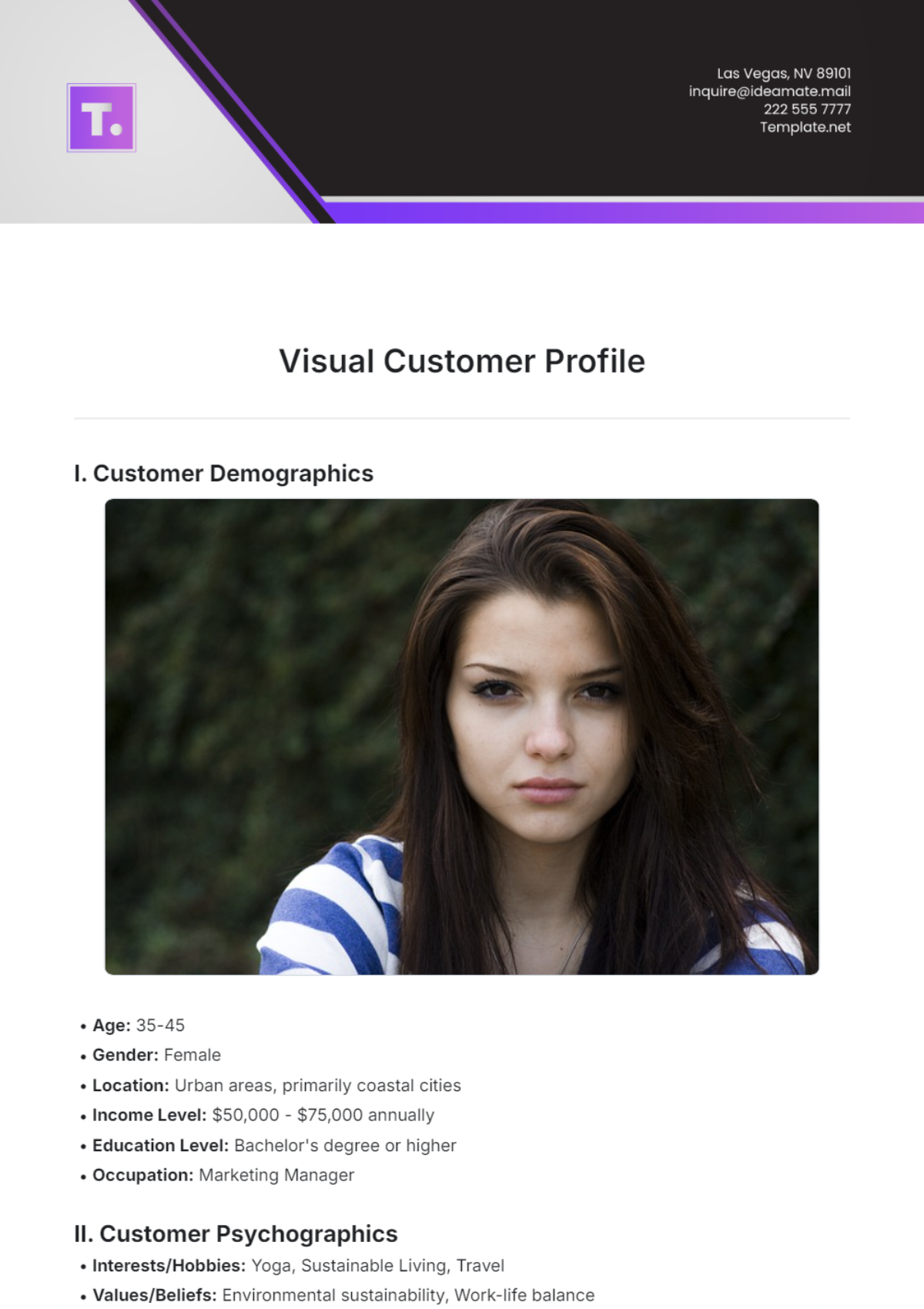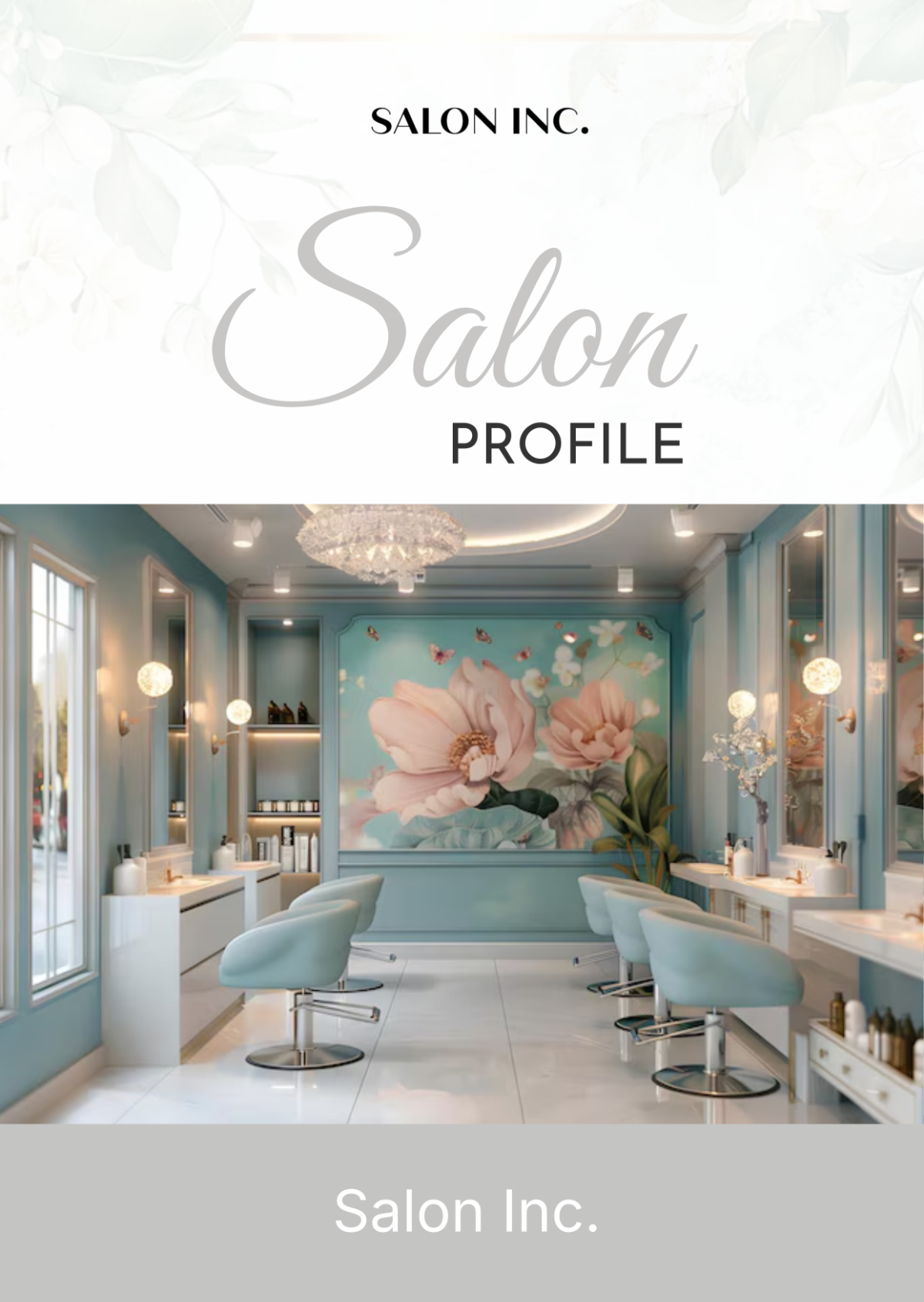B2B Customer Profile
I. Customer Overview
Company Name: [Customer Company Name]
Industry: [Industry Type]
Location: [Headquarters Location]
Company Size: [Number of Employees]
Annual Revenue: [Annual Revenue]
II. Key Contacts
Primary Contact:
Name: [Primary Contact Name]
Title: [Job Title]
Email: [Email Address]
Phone Number: [Phone Number]
Secondary Contact:
Name: [Secondary Contact Name]
Title: [Job Title]
Email: [Email Address]
Phone Number: [Phone Number]
III. Business Needs and Challenges
Primary Business Needs:
Enhanced Digital Presence: To improve online sales and customer engagement through a revamped digital platform.
Data-Driven Decision Making: To leverage data analytics for better inventory management and customer insights.
Supply Chain Optimization: To streamline operations and reduce costs through more efficient supply chain solutions.
Current Challenges:
Outdated Technology Infrastructure: Existing systems are unable to support newer e-commerce functionalities and advanced data analytics.
Scalability Issues: Difficulty in scaling operations during peak seasons due to current technological constraints.
Cybersecurity Concerns: Increased vulnerability to cyber threats as business moves more towards digital transactions.
IV. Buying Process
Decision-Making Process: The decision-making process at [Customer Company Name] typically involves a thorough evaluation of proposals, followed by a series of meetings with vendors. Final approval is required from the top management after a recommendation from the IT and procurement departments.
Key Decision Makers:
Chief Technology Officer (CTO): Oversees all technology decisions and is crucial in the final selection of IT services and products.
Procurement Manager: Manages vendor relationships and is key in the initial filtering of potential service providers.
Purchase Criteria:
Technology Compatibility: Solutions must integrate seamlessly with existing platforms and support future upgrades.
Vendor Support and Service: Continuous support post-implementation and a clear service-level agreement.
Cost-Effectiveness: Solutions must provide a favorable return on investment and stay within budget constraints.
V. Historical Interaction and Sales History
Past Purchases:
Product/Service 1: Enterprise Resource Planning (ERP) Software Upgrade
Product/Service 2: Cloud Storage Solutions
Purchase Date: ERP was purchased in January 2052, and Cloud Solutions were added in July 2053.
Interaction History:
Date: March 2053
VI. Opportunities and Strategies for Engagement
Potential Opportunities:
Integration of Advanced AI and Machine Learning:
Given the retail industry's increasing reliance on predictive analytics for inventory management and personalized marketing, [Customer Company Name] stands to benefit significantly from integrating AI and ML technologies.
Implementation of an Omnichannel Retail Strategy:
Enhancing the customer experience across all platforms (online, mobile, and in-store) by using a unified system that provides a seamless, integrated consumer journey.
Engagement Strategies:
Tailored Demonstrations and Pilot Programs:
Offer to set up a pilot program or demonstration for one or more of the proposed solutions, specifically targeting the identified needs such as AI-driven analytics or omnichannel capabilities. This would allow [Customer Company Name] to see firsthand the benefits and efficiencies gained before committing to a full-scale implementation.
Educational Workshops and Consultations:
Organize workshops that involve key decision-makers from [Customer Company Name] where they can learn about emerging retail technologies and how these can resolve their specific challenges.

















































